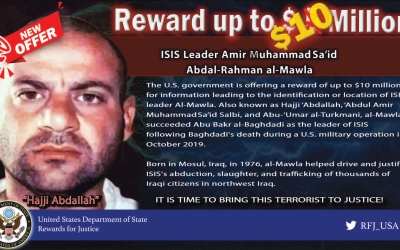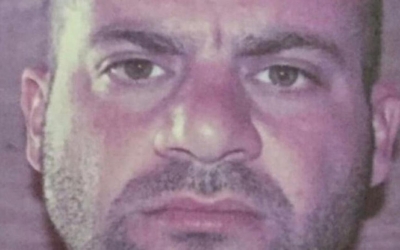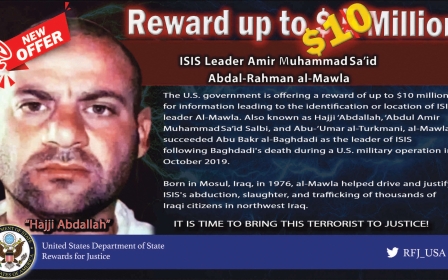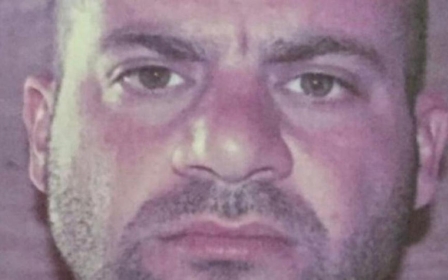Islamic State: US officials share details of Syria raid that killed group's leader

The Islamic State (IS) leader killed in a United States raid in Syria lived on the third floor of a compound above an “unwitting family” that was not associated with the group, US officials have said.
Washington said that Abu Ibrahim al-Hashimi al-Qurayshi blew himself up, killing members of his own family, during the operation by US special forces on Wednesday in Idlib, about 2km from the Turkish border.
The officials said US forces rehearsed the helicopter raid over and over, hoping to capture Qurayshi in the house, where he was living with his family.
But before they could reach him, they said Qurayshi detonated a suicide bomb, triggering a large explosion that blew mangled bodies - including his own - out of the building into the streets outside.
US President Joe Biden, who monitored the raid from the White House's Situation Room alongside Vice President Kamala Harris, called Qurayshi's suicide a "final act of desperate cowardice".
It echoed the self-detonation of a bomb by his predecessor, IS founder Abu Bakr al-Baghdadi, during a US raid in 2019 in Syria.
Marine General Frank McKenzie, who oversees US forces in the region and was providing updates to Biden, said US troops got six civilians, including four children, to leave the first floor of the building before the blast ripped apart the top floor.
"The explosion, which was more massive than would be expected from a suicide vest, killed everyone on the third floor and in fact ejected multiple people from the building," McKenzie said, adding that Qurayshi, his wife and two children died.
A second US official later said two of Qurayshi's wives and one child were killed.
As US troops advanced to the second floor, one of Qurayshi's lieutenants and his wife started firing on the Americans and were killed.
One child was found dead there, McKenzie said, and three other children and an infant were brought to safety from the second floor.
Syrian rescue workers said at least 13 people died during the attack, most of them women and children.
The Pentagon said at least two armed members of a local al-Qaeda affiliate were killed by gunfire from a US helicopter after they approached the scene of the raid while US special forces were still at the site.
December planning
Planning for the operation began in early December, when officials became convinced Qurayshi was living in the building, the officials said.
Biden received a detailed briefing on options for capturing the IS leader alive on 20 December, a senior White House official said.
One official said the operation was complicated by the fact Qurayshi rarely left his residence on the building's third floor and relied on couriers to interact with the outside world.
The number of children seen in the area and families believed to be living on the first floor led US officials to try to craft a mission aiming to safeguard civilians, they said.
That ultimately required putting US forces at risk in a raid, instead of launching a remote strike, the officials said.
Biden gave final approvals for the mission on Tuesday during an Oval Office meeting with Austin and General Mark Milley, who as chairman of the Joint Chiefs of Staff is the top American military officer, US officials said.
At one point, a helicopter involved in the raid suffered a mechanical failure and had to be destroyed rather than left behind, the Pentagon said.
Qurayshi's identity was confirmed using biometric data taken from a fingerprint during the flight back, the official said.
They waited to announce his death until after a DNA test was completed, they added.
"He was on our target list from the earliest days of the campaign. He was Baghdadi's right-hand man, and... was personally responsible for some of the most vicious ISIS atrocities," said the official.
Pentagon review
US Secretary of Defence Lloyd Austin said that IS fighters were responsible for the deaths of civilians during the operation, but suggested that the Pentagon will review the incident.
“This operation was specifically designed and conducted in a manner to minimise civilian casualties,” Austin said in a statement.
“We know that al-Qurayshi and others at his compound directly caused the deaths of women and children last night.
"But, given the complexity of this mission, we will take a look at the possibility our actions may also have resulted in harm to innocent people.”
Last week, an independent study of the Pentagon reported that the US military was not properly equipped to investigate civilian casualties and take steps to prevent future deaths.
On the same day, Austin had announced that the Pentagon would implement a series of measures that would change the culture of the military in order to prioritise the prevention of civilian harm as a core part of their missions.
Middle East Eye propose une couverture et une analyse indépendantes et incomparables du Moyen-Orient, de l’Afrique du Nord et d’autres régions du monde. Pour en savoir plus sur la reprise de ce contenu et les frais qui s’appliquent, veuillez remplir ce formulaire [en anglais]. Pour en savoir plus sur MEE, cliquez ici [en anglais].






